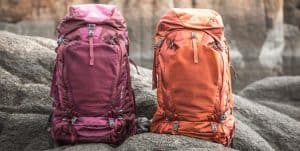 Whether you’re signing up for your favorite band’s concert only to realize you’ll not be able to fit the merch you want, or getting in your car to drive to work only to find out that the only thing that made it through was one of your shoes, you know how important it is always to make sure that whatever you carry will indeed fit your needs. This is something hiking Osprey Backpacks and Bags in Australia are definitely no exception to. It really doesn’t matter if the hiking trail you’re planning on taking has a challenge rating of 1 or 10 — what matters is knowing whether the backpack you have will be able to accommodate everything you need to take with you and then some.
Whether you’re signing up for your favorite band’s concert only to realize you’ll not be able to fit the merch you want, or getting in your car to drive to work only to find out that the only thing that made it through was one of your shoes, you know how important it is always to make sure that whatever you carry will indeed fit your needs. This is something hiking Osprey Backpacks and Bags in Australia are definitely no exception to. It really doesn’t matter if the hiking trail you’re planning on taking has a challenge rating of 1 or 10 — what matters is knowing whether the backpack you have will be able to accommodate everything you need to take with you and then some.
1. Designs
The credit for the popularity of the internal frame hiking backpack goes to Rob Lowe. Lowe climbed the first 13,200 feet of Mount Everest from sea level using an internal frame backpack and was sponsored by Lowe Alpine. Since then, the internal frame backpacks have gained popularity due to their greater comfort when loaded with a heavy load.
If you plan to walk narrow trails as well as off-trail, then your next step will be selecting a backpack. There are a number of things to consider when selecting a hiking or Backpacking backpack. The two main styles of Backpacking backpacks are external frame backpacks and internal frame backpacks.
Let’s face it, external frame backpacks are not the most fashionable type of backpack. The vast majority of us prefer a backpack that is more compact and hugs our bodies closely. However, in many cases, external frame backpacks are necessary. For example, if you spend time hiking in sweltering conditions, then an external frame backpack is often the better option.
2. Size
Sally is buying a new hiking backpack. She goes into her local outdoor shop and reports to the sales associate, “I’m looking for a backpack with high capacity. I need to be able to carry everything I need for my backpacking trips.” It is important to pack your bag with the correct capacity. For example, you wouldn’t put a 5-day camping gear into a 3-day hiking backpack. However, this does mean our backpack can be a little under or overpacked depending on the trip. Yet, it is still important to pack your backpack with healthy snacks and lots of water to keep you going, so make sure to pack well in advance.
3. Fitting and durability
A good backpack is more than just a bag with straps. It’s the contents within and what you can do with it. But, a good backpack does much more than hold your gear and keep it safe. It should be comfortable to wear, protect you from the elements, fit your body properly, have enough pockets to organize your gear, and fit all of your gear without using external storage devices.
If you’re just starting to explore the world of hiking and backpacking, then achieving a great fit for your backpack is probably one of the factors that will determine whether you enjoy the activity or not.
A good backpack will last you many seasons and keep its original condition even after years of use. It should be firm on your back, supporting your body weight and feeling comfortable. Choose amenities that would make your hiking trip easier rather than finding the lightest option with the most load.


